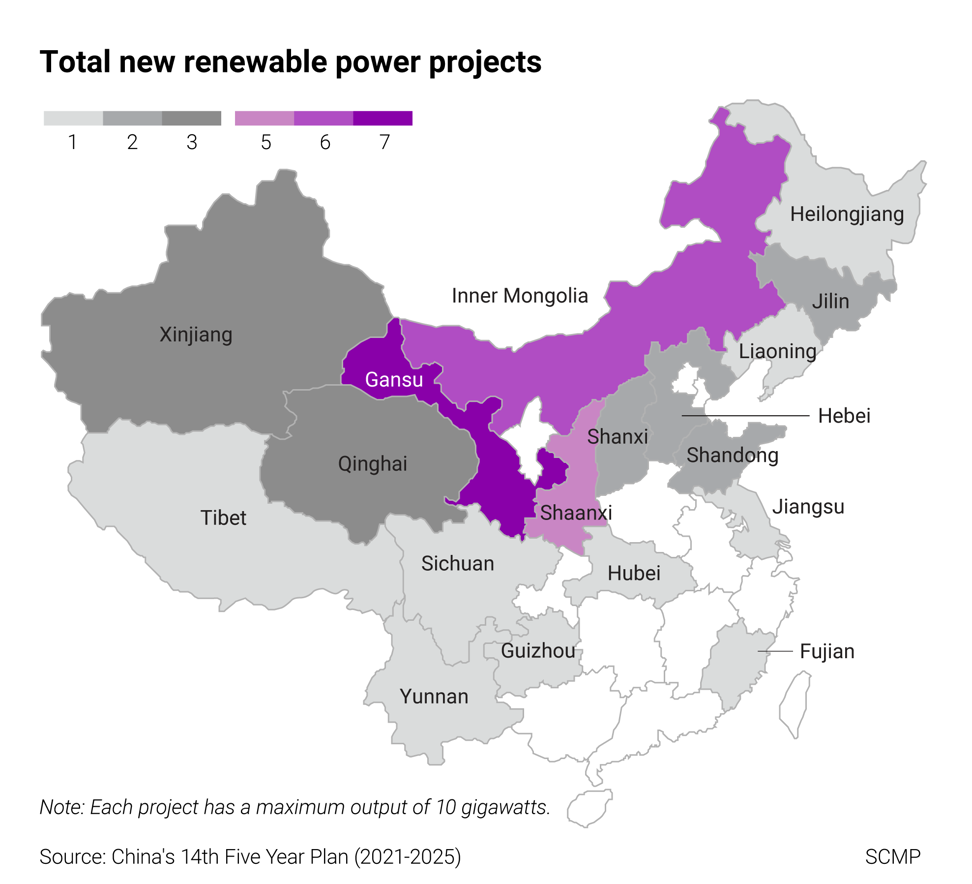
China’s clean energy push targets sandy, rocky reaches for solar and wind power bases
- President Xi Jinping says work is under way on the first phase of projects to generate about 100GW in all
- But, even as provinces vie to burnish renewables credentials, balancing demand and costs is likely to remain a challenge
“Construction of the first phase of projects with an installed capacity of about 100 gigawatts started recently,” Xi said via video link on Tuesday.
China is at the centre of global demand and supply for renewables, having accounted for around 40 per cent of global capacity growth for several years, an International Energy Agency report said in May.
By the end of 2020, China had 281.5GW of wind generation capacity and 253.4GW of solar, according to the National Energy Administration.

03:30
Life with no power: Why some major cities in China are having to ration electricity
According to Chinese energy industry website BJX News, 19 of China’s 31 provinces and regions have proposed to build such bases – numbering 41 in all, each with an installed capacity of 10GW.
Chinese utilities’ renewable energy goals raise questions about costs, delivery
In the deserts of Inner Mongolia’s Alxa League prefecture, construction on a 1.6GW wind farm and a long distance transmission line to Shandong province started in August, marking the first step towards building a 10GW wind farm in the region.
By 2030, Alxa League aims to have one each of 10GW wind, solar and thermal power bases, as peak shaving resources aimed at preventing short-term spikes in demand.

The 100GW clean energy projects President Xi mentioned are scattered around the country, Yang Fuqiang, a research fellow at Peking University’s Research Institute for Energy, pointed out.
The scale may be even bigger than India’s entire installed wind and solar capacity, but it is not a huge figure considering China’s 2030 climate targets.
“The country’s current wind and solar capacity stands at about 500GW. That means we still have to have 1,000GW to 1,300GW of newly added capacity by 2030, and 100GW is not a big number taking such a scale into account.”

04:01
Chinese manufacturing thrown into disarray as country's electricity crisis rolls on
Yang believes a big part of the newly added renewable power projects should be rooftop solar panels or wind energy distribution in eastern China, with its large urban centres and factories where much of the energy is consumed.
“Renewable power should be sent out together with other dispatchable sources of electricity, or the stability and safety of the grid will be affected,” said Yang, referring to the fact that it is easier to adjust the power output of coal-fired and hydro power plants.
Muyi Yang, senior electricity policy analyst at Ember, an independent climate and energy think tank in the UK, said network constraints would be a key factor.
“This means that the development of these projects needs to be better coordinated with the grid companies, to ensure that necessary grid infrastructure can be also developed,” he said.

Yang at Peking University said a large amount of the renewable energy generated in the western region should be consumed locally, not exported to eastern provinces via long distance transmission.
“One solution would be to relocate the high energy consumption and high emission projects to the western provinces where they can run on renewable power,” he said.
“This would help the western provinces develop their economy and utilise their abundant renewable energy sources, and the costs would be lower.”


